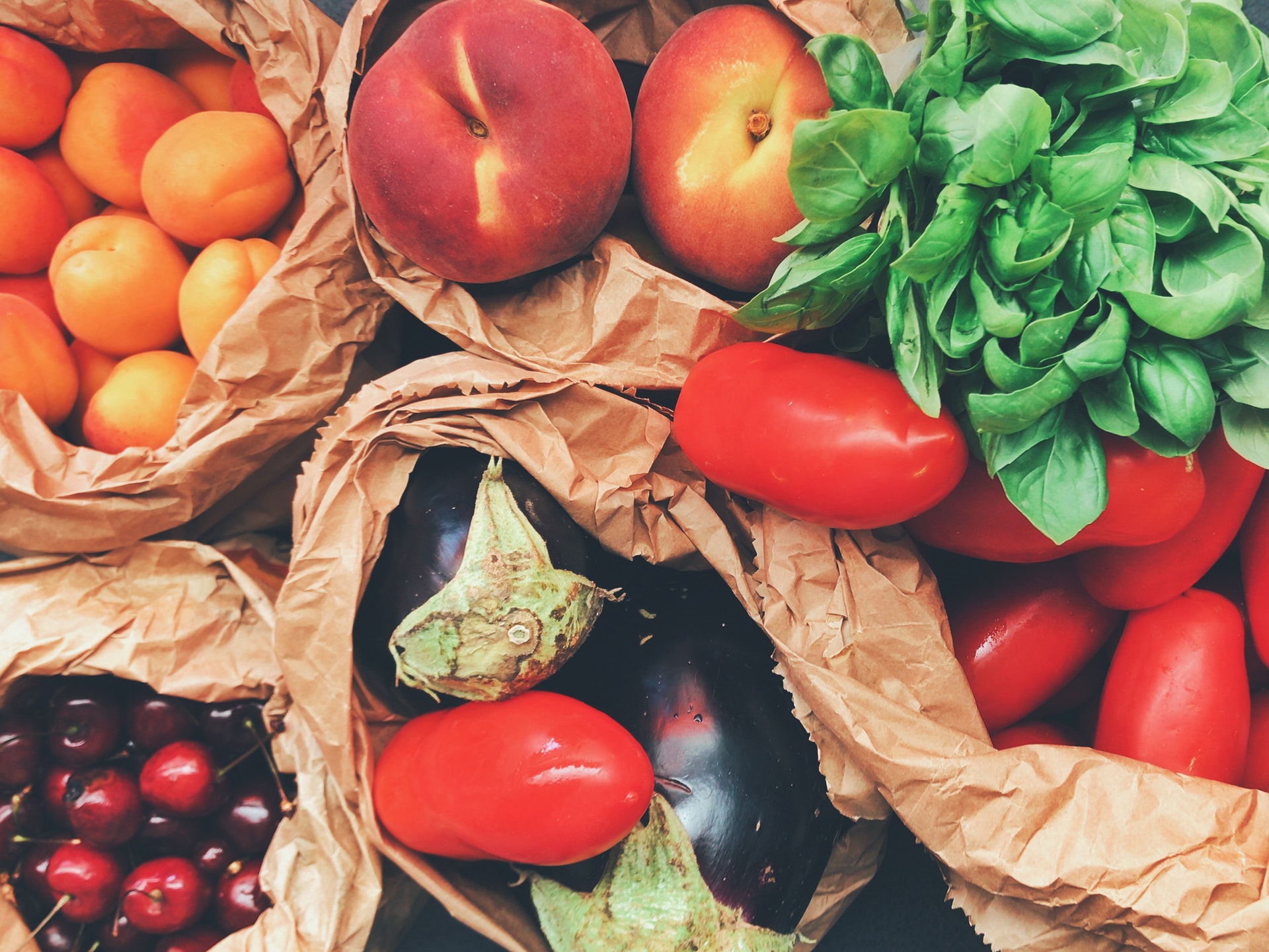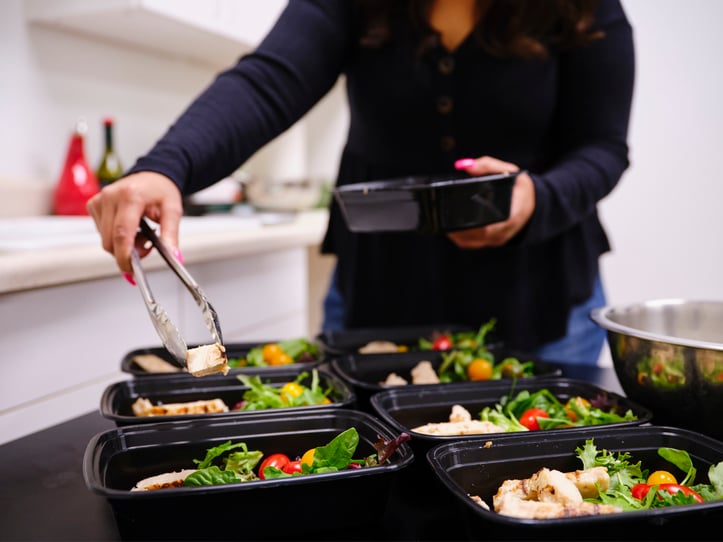Most of us are creatures of habit when it comes to our diets. We buy the same groceries each week, we eat at the same restaurants, and we order the same coffee every day. However, every once and a while, our routines get disrupted, and we are forced to change our habits.
Whenever this happens, we usually aren't prepared to handle these changes and often need some help adjusting. One of the significant changes that can occur is when we have to travel to places for extended periods or whenever we get stuck at home for long periods of time due to weather, natural disasters, or other unforeseen events.
Adjusting to extended periods at home may seem like a daunting task. However, there are a few simple tips and tricks that you can use to thrive, and they are pretty easy to implement.
Nutrition expert or not, practicing these 3 simple diet tips will lead to a healthier lifestyle at home.
1. Stock up on frozen fruits and vegetables
We know that fruits and veggies are critical pieces to a healthy diet. There is a lot of evidence to suggest that higher intakes of fruits and vegetables can reduce your risk of heart disease (1). However, if you can't make it to the grocery store every couple of days, or you need to buy fruits and vegetables in bulk, buying them fresh is challenging to do. Instead, you can opt for frozen fruits and vegetables.
While there has been some speculation that frozen fruits and vegetables are not as "healthy" as their fresh counterparts, this isn't all that accurate. There is not a huge difference between fresh or frozen foods (2), and some nutrients are found in higher quantities in frozen fruits and vegetables than fresh.
2. Buy nutrient-dense, nonperishable foods
One of the challenges of buying groceries and storing food for extended periods is that generally speaking, the "healthier" more nutrient-dense, whole foods tend to be more perishable than low-nutrient, highly processed foods. However, there are some excellent options for foods that have a lot of nutrients and are overall "healthy" foods that also have really good shelf lives and can be very easy to cook.
The squash family is an excellent source of vitamins and minerals and can last several months just sitting on your counter. For example, butternut squash is high in vitamin A, vitamin B-5, vitamin B-6, folate and potassium. Some excellent squash options are: butternut squash, acorn squash, spaghetti squash, and pumpkin. These can be roasted, grilled, or cut up and put into stews or soups and are a relatively inexpensive food when bought by the pound.
Other foods that fit the bill here include lentils. Lentils are a great plant-based protein source that comes backed with vitamins and minerals and have a very long shelf life as well. Lentils are high in magnesium, zinc, potassium, iron, and several B vitamins. They are also a great source of fiber. Lentils come in a range of types (mainly classified by their color), with each one having a slightly different nutrient profile.
Lentils are easily cooked and can be added to almost any dish. They are great side dishes and even are great main dishes for vegetarians or plant-focused meals, nutrient-dense, nonperishable food. They can be bought dried and in bulk, or they can be bought cooked and in the can, which makes them easy to store for long periods. Chickpeas, peas, kidney beans, black beans, and soybeans are all excellent options.
There are also forms of protein that are nutrient-dense and nonperishable. For example, protein powders such as whey protein can be excellent, cost-effective, and versatile protein sources. With extended shelf-lives, you can store around 100 servings of protein for ~50 dollars, which makes it substantially more cost-effective than other forms of protein.
Another good protein source with a long shelf life is eggs, which have a roughly five-week shelf life and can provide very nutrient-dense, low cost, and versatile protein sources. Ground beef can be stored in the freezer and maintains almost all of its nutrient content and is a very versatile source of protein that can be used in a wide range of meals.
And don't forget almonds and other nuts - they are a great, healthy option when shopping for the long haul.
3. Plan out your meals
“Failing to plan is planning to fail.”
As highlighted in our "Eating Healthy at Home" mini-course, one of the best ways to ensure you have good, nutritious food during extended periods at home is having a plan for your meals. You can buy ingredients that can work across several meals.
For example, you can buy a package of frozen chicken and put it in a crockpot and make shredded chicken that can be used in fajitas, chicken salads, curried dishes, etc. You can also make lentils and then include them as a side dish for one dinner and put them in a soup the next night for another dinner.
Planning out several weeks of meals at once not only can make cooking more manageable, it can lower your cost of food and waste. Stewardship of food is a great quality to have during extended periods of being at home.
You can learn more about how to plan your meals successfully within this blog post.
The Wrap Up: an extended stay at home Can be healthy!
A significant change in your routine can have an impact on your nutrition plan. Extended homestays can make keeping nutritious food in the house a bit more complicated than usual, but it doesn't mean it is impossible.
Buying frozen fruits and veggies can keep your fruit and vegetable intake high. You can be smart in what types of nonperishable foods you buy and opt for dense nutrient options. Lastly, planning ahead and making sure you are efficient with your food goes a long way.
Check out these other nutrition resources
- 5 Nutritious Meals for Healthy Cooking at Home
- Demystifying the DASH Diet
- Plant Based Diets and Weight Loss
- Intuitive Eating Explained
- Our Online Nutrition Courses (including some free mini-courses) - for continuing education!
References
- Incorporating Healthy Dietary Changes in Addition to an Increase in Fruit and Vegetable Intake Further Improves the Status of Cardiovascular Disease Risk Factors: A Systematic Review, Meta-Regression, and Meta-Analysis of Randomized Controlled Trials.
- Vitamin Retention in Eight Fruits and Vegetables: A Comparison of Refrigerated and Frozen Storage.
















